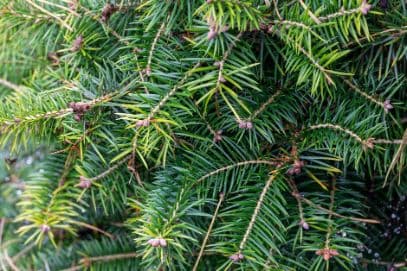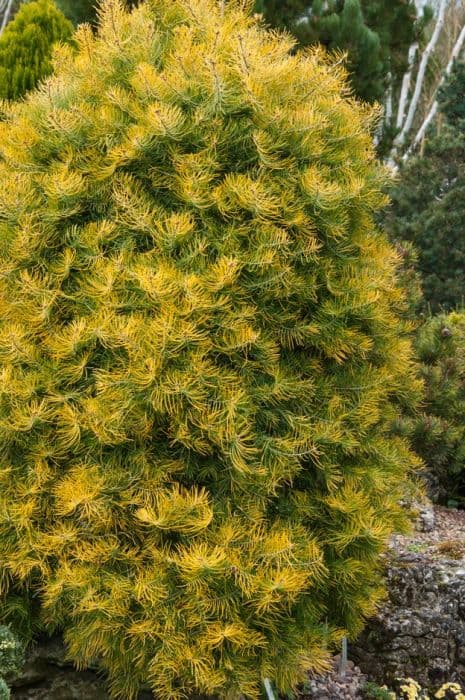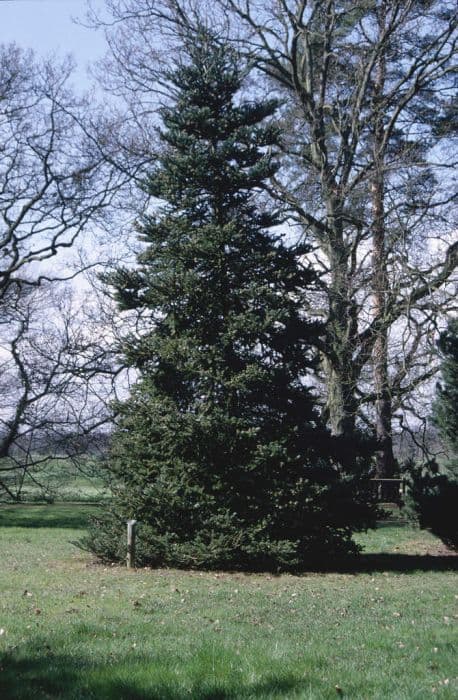Scots pine Fastigiata Group Pinus sylvestris Fastigiata Group

ABOUT
Fastigiata Group are medium-sized conifers, up to 8m tall, of columnar form with tight, narrow, ascending branches and blue-green leaves in bundles of two
About this plant
 Names
NamesFamily
Pinaceae
Synonyms
Columnar Scots Pine
Common names
Pinus sylvestris 'Fastigiata', Pinus sylvestris var. pyramidalis, Pinus sylvestris 'Columnaris'.
 Characteristics
CharacteristicsLife cycle
Perennials
Foliage type
Evergreen
Color of leaves
Green
Height
30 feet [9 meters]
Spread
10 feet [3 meters]
Plant type
Tree
Hardiness zones
3
Native area
Europe
Benefits
 General Benefits
General Benefits- Ornamental Value: The Fastigiate Scots Pine is widely used for its architectural form and evergreen foliage, making it a visually striking addition to landscapes.
- Wildlife Habitat: Provides shelter and food for birds and various small mammals, enhancing biodiversity in its vicinity.
- Windbreak: Often planted in rows to form windbreaks that protect soil from erosion and shield other plants from strong winds.
- Soil Stabilization: The root system helps to stabilize soil, preventing erosion and landslides in hilly or uneven terrain.
- Tolerance to Poor Soils: It can thrive in a range of soil types, including poor or sandy soils where other plants might struggle to survive.
- Drought Resistance: Once established, the Fastigiate Scots Pine is drought-tolerant and requires minimal watering, suitable for xeriscaping.
- Cold Hardy: Has the ability to withstand very cold temperatures, making it suitable for northern climates and high-altitude gardens.
- Low Maintenance: Typically requires little pruning or additional care once established, which is ideal for low-maintenance landscapes.
- Urban Tolerant: Can tolerate urban conditions like light pollution and constrained root space, making it suitable for city environments.
 Medical Properties
Medical Properties- This plant is not used for medical purposes.
 Air-purifying Qualities
Air-purifying QualitiesThis plant is not specifically known for air purifying qualities.
 Other Uses
Other Uses- Shipbuilding: Scots pine timber is renowned for its strength and was historically used in constructing ships and boats.
- Violin Making: The wood is sometimes used in making violins due to its resonant qualities and fine grain.
- Animal Bedding: The wood shavings of Scots pine can be utilized as bedding in stables for horses or in kennels for dogs, providing a natural and absorbent material.
- Tar Production: Historically, the resin of Scots pine was distilled to produce tar, which was an important waterproofing agent for wooden ships and roofs.
- Christmas Trees: Scots pine is commonly used as Christmas trees in many regions due to its symmetrical shape and evergreen foliage.
- Soil Erosion Control: Planting Scots pine in areas susceptible to soil erosion can help stabilize the ground with its extensive root system.
- Carpentry and Joinery: The wood is used in general carpentry, interior trim, and construction due to its workability and availability.
- Fragrance Industry: The essential oils extracted from Scots pine needles are used in perfumes, scented products, and aromatherapy.
- Wildlife Habitat: Scots pine forests provide habitats for various species of birds and other wildlife, offering nesting sites and shelter.
- Windbreaks and Shelterbelts: The trees are planted in rows to protect crops and soil from wind damage, and also offer shade and shelter for livestock.
Interesting Facts
 Feng Shui
Feng ShuiThe Scots Pine is not used in Feng Shui practice.
 Zodiac Sign Compitability
Zodiac Sign CompitabilityThe Scots Pine is not used in astrology practice.
 Plant Symbolism
Plant Symbolism- Resilience: The common name of Pinus sylvestris Fastigiata Group is Scots pine. Being a pine species, it symbolizes resilience as it can grow in harsh conditions and withstand cold and drought.
- Longevity: Scots pine is known for its long life span, making it a symbol of longevity and immortality.
- Steadfastness: This plant represents steadfastness and reliability, as it stands tall and firm against the elements.
- Endurance: Associated with its capacity to endure the changing seasons, Scots pine represents the ability to persevere.
- Purity: In some cultures, pine trees are thought to repel evil spirits, symbolizing purity and cleansing.
 Water
WaterColumnar Scots pine should be watered deeply and infrequently to encourage a strong, deep root system. Initially, when the tree is young or newly planted, it should be watered about once a week with 10-15 gallons per watering session, depending on the soil conditions and climate. Once established, the watering frequency can decrease, and the tree may only need additional water during extended dry periods or extreme heat. It is important to allow the soil to dry out between waterings to prevent root rot. In the winter months, the tree requires less water but should not be allowed to dry out completely.
 Light
LightColumnar Scots pine thrives in full sunlight, requiring at least 6 hours of direct, unfiltered sunlight each day. The best location for this tree would be a spot where it can receive ample morning and afternoon sun, which is crucial for its growth and health. Avoid placing it in deep shade or where buildings or other trees may block significant amounts of sunlight.
 Temperature
TemperatureColumnar Scots pine is adapted to a wide range of temperatures and can withstand cold down to -40 degrees Fahrenheit. The ideal temperature for growth is between 60 and 70 degrees Fahrenheit, but it can tolerate highs well into the 90s. These trees are hardy in USDA zones 3 through 7 and do not perform well in climates with high heat and humidity during summer.
 Pruning
PruningPruning Columnar Scots pine is typically done to remove dead or diseased branches and to shape the tree for aesthetic purposes or to prevent safety hazards. The best time to prune is in late winter or early spring before new growth starts. Pruning should be performed as needed, but not too frequently, as this tree naturally maintains a good shape. Be cautious not to prune too much at once, as this can stress the tree.
 Cleaning
CleaningNot needed
 Soil
SoilColumnar Scotch Pine thrives best in well-drained sandy or loamy soil with a pH range of 5.5 to 6.5. A soil mix rich in organic matter is ideal; incorporating peat moss, compost, and perlite will enhance drainage and aeration. Periodic mulching will help maintain soil moisture and health.
 Repotting
RepottingColumnar Scotch Pine, being a large and slow-growing tree, does not require frequent repotting. Young trees can be repotted every 2 to 3 years to encourage growth, but mature trees can remain in the same spot unless there are signs of poor health or overcrowding.
 Humidity & Misting
Humidity & MistingColumnar Scotch Pine prefers low to moderate humidity levels, typical of its natural habitat. It does not require special humidity conditions when planted outdoors, as it is well adapted to withstand various environmental conditions within its hardiness zones.
 Suitable locations
Suitable locationsIndoor
Use bright, cool conditions; avoid heat, dry air.
Outdoor
Full sun, protect from high winds, fertilize sparsely.
Hardiness zone
3-7 USDA
 Life cycle
Life cycleScots Pine Fastigiata Group begins its life as a seed, which germinates in spring if conditions are suitable, requiring moisture and a suitable temperature. The seedling stage follows, where the young plant develops its first roots and shoots. As it matures into a sapling, Scots Pine Fastigiata Group starts establishing a more robust root system and a straight, upright trunk characteristic of this cultivar. Over several years, the tree enters its juvenile and adult phases, characterized by rapid vertical growth, expansion of the canopy, and maturation of foliage into dense, columnar forms. The reproductive phase follows, with the tree producing male and female cones; the male cones release pollen, which fertilizes the female cones, leading to seed development. After many decades, the Scots Pine Fastigiata Group may reach senescence, where growth slows and the tree eventually dies, completing its life cycle.
 Propogation
PropogationPropogation time
Spring
Propogation: Pinus sylvestris, commonly known as Scots Pine, typically propagates through seed collection and sowing. The most popular method of propagation for this species is through seeds, which are usually harvested in the autumn. Once collected, the seeds require a period of cold stratification to simulate winter conditions and break dormancy; this is often done by mixing the seeds with moist sand and refrigerating them for about 60 days. Following stratification, seeds are sown in well-drained soil and exposed to sunlight. Germination usually occurs in the spring, and seedlings can be transplanted to their permanent location once they are sufficiently established.









